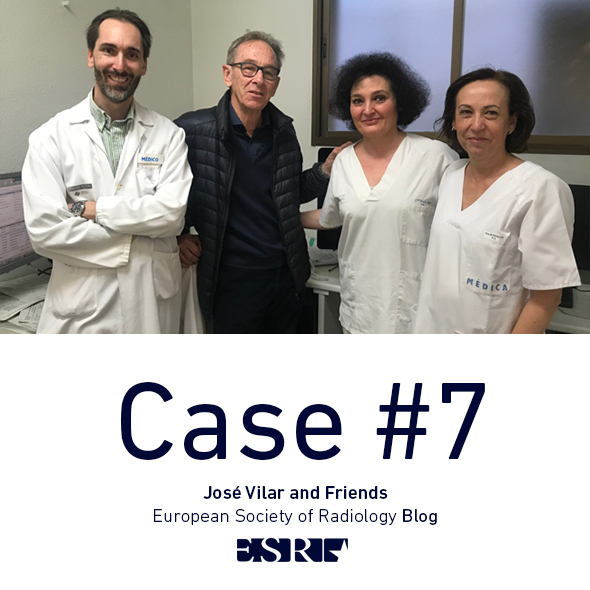
Good day colleagues,
This case was brought to me by Drs María Vega, Magdalena Graells and Luis Garcia (Hospital Universitario Dr Peset, Valencia; all pictured above in the case cover) and opens a new look to my blog.
This is a 35-year-old man from Pakistan that complains of long standing back pain.
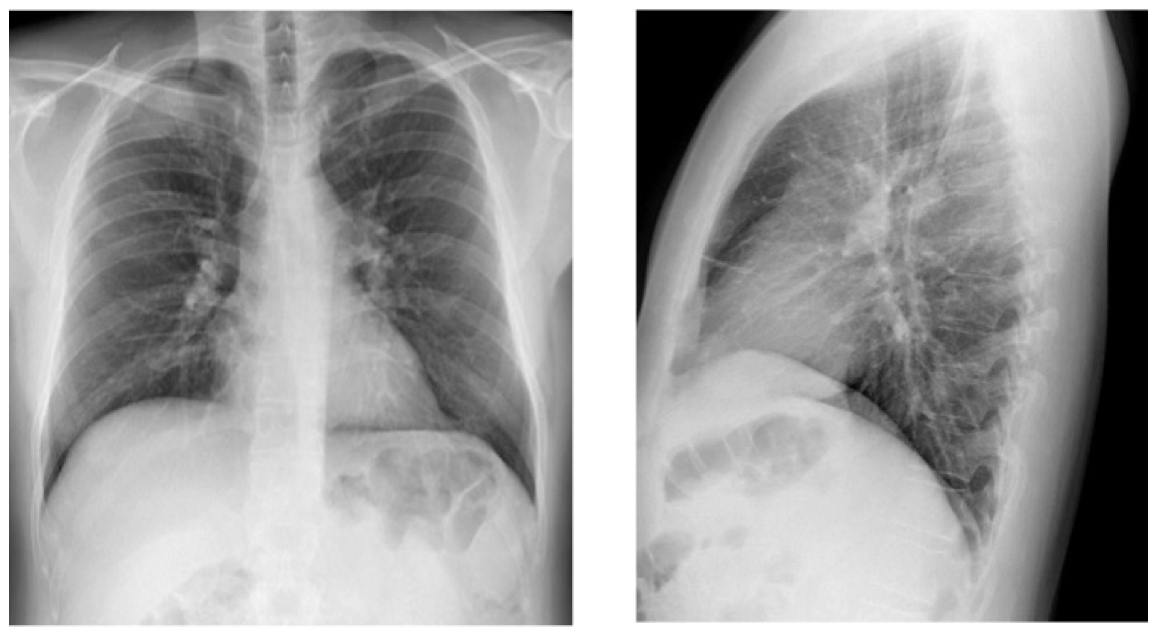
We start with a chest radiograph. Please look carefully at the images and tell me what you think.
Update: Additional images and comment!
Pancoast it’s a good choice when you see a lesion like this, but this patient is a bit young for a diagnosis of lung cancer (but not impossible). Here are several CT images that may help in the differential diagnosis, and explain the back pain.
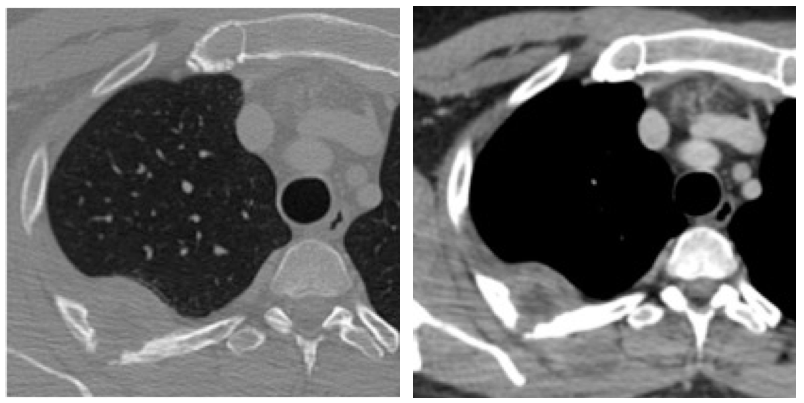
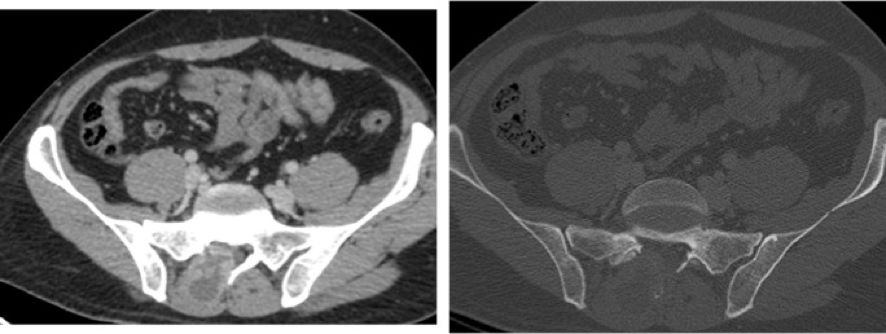
Click here for the answer
Let me explain the findings:
The chest radiograph (PA) shows an opacity in the right upper hemithorax. As some of you saw very well, the lesion involves a rib.
In the Chest CT we can see an extra pleural lesion with rib destruction and accompanying soft tissue mass hypodense in the centre ( Abscess).
In the pelvic CT we identify destruction of the right posterior elements of S1 along with a soft tissue mass again with a central hypodensity.
Additional bony lesions were found in both iliac bones.
Diagnosis: Multifocal Tuberculosis.
Comment: Tuberculosis is the most common infection of bones, especially in the spine. The presence of disease does not necessarily imply that there is pulmonary involvement. In this case there were no signs of pulmonary tbc.
Tuberculosis may be multifocal, as in this case, being more common in immunocompromised patients, although this patient had no immune problems. The involvement of posterior elements of the spine is an atypical feature but, when present, should suggest tuberculosis rather than other infections. ( Diehn F. Imaging of Spine Infection: Radiol Clin N Am 50 (2012) 777-798)
Teaching point:
1- Remember to look at the bones in the chest and think of infection; an increasing disease in today´s world.

Soft tissue mass in right upper chest with rib erosion (red arrow). Note the hypodensity (blue arrow) and the convex border typical of an extra pleural lesion (white arrow).
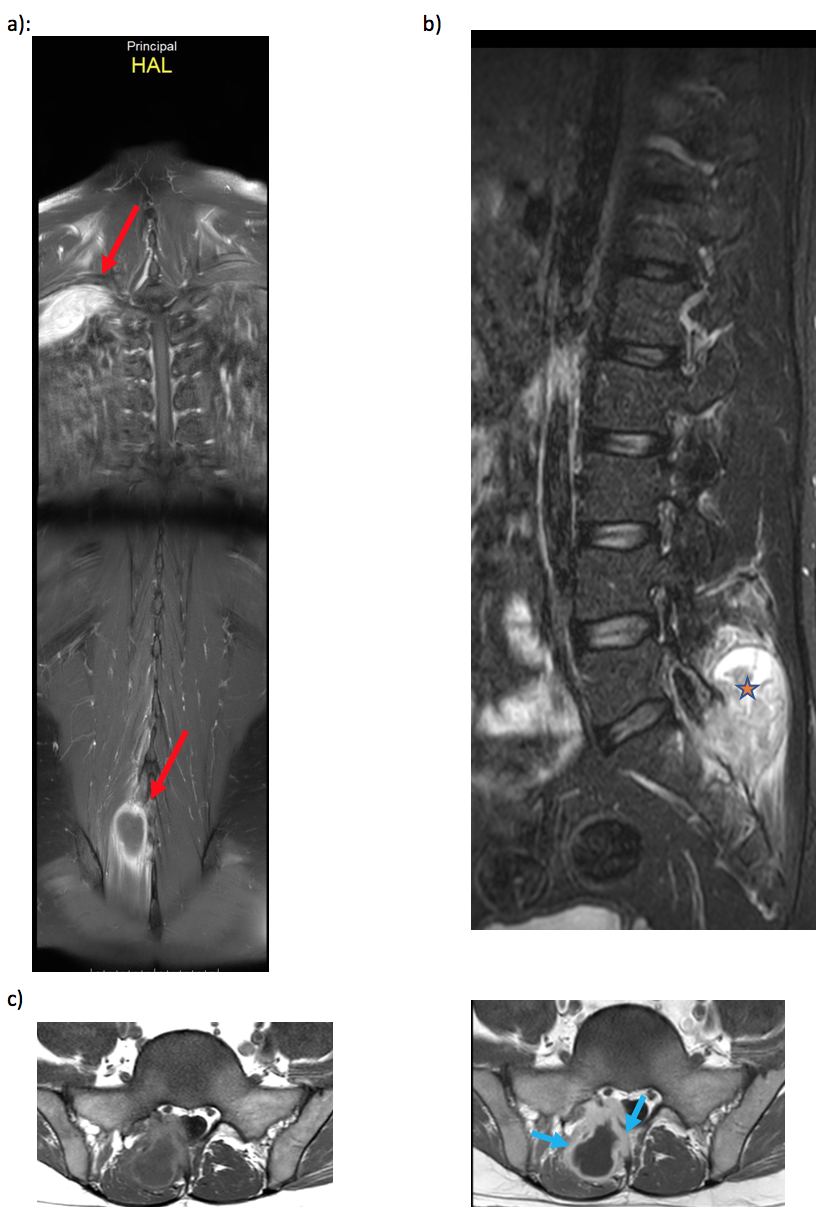
MRI examination: a): Coronal T1 weighted with fat suppression and contrast shows both the thoracic and the pelvic lesions. (Red arrows), b) Sagittal STIR shows the abscess involving the posterior elements (red star). c): axial T1 weighted without (left) and with contrast (right) showing the large abscess with an enhancing wall (Blue arrows).
CT pelvis: Osteolytic lesions are present in both iliac bones.
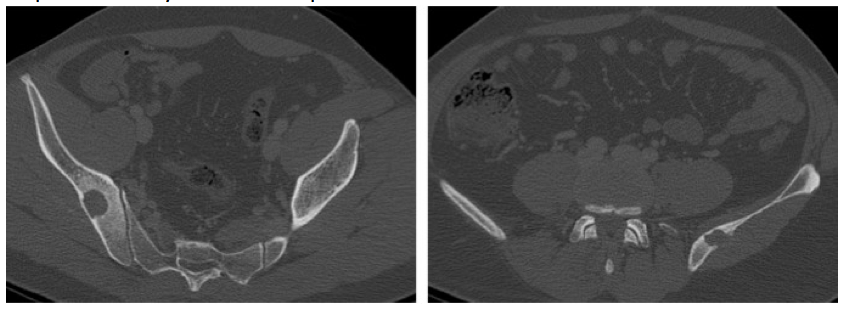
I must congratulate those of you who detected the rib lesion and thought of infection or even of TBC!









no abnormality detected .
Apico-dorsal pleural thickening. Scalloping of right 4th rib
Apical posterior pleural thickening with scalloping of right 4th rib
Pan coast tumor.
Beside rib scalloping and pleural thickening there is an associated posterior soft tissue swelling.
Hello!! There is an increased density projected over the upper right lobe. In the lateral view, it seems to be extrapulmonary and I can delimitate the 4 posterior costal arc in the PA view so I think it is a costal lesion.
Perhaps hiliar adenopathies.
I think in TBC. Abscess in right paraspinal muscle and pleural lesión with rib destruction.
Chest X ray PA view shows poor delineation of the posterior end of the right 3rd rib with a peripheral based homogeneous opacity in the RUL. No evidence of air fluid level, calcification or cavitation noted within the lesion . At least two linear reticular opacities are seen in the paracardiac region on the right side parallel to the right hemidiaphragm. No other pulmonary opacity see. A few radiopaque densities are seen in bilateral hila -may represent calcified hilar lymphadenopathy.
Cardiac and hemidiaphragm silhouette normal. No other bony or soft tissues abnormalities seen.
D/D 1. pleuropulmonary TB with bony involvement
2. Pancoast tumor.
Rib destrucrion and destruction in posterior element of vertebra S1. Associated granulomatous soft tissue swelling. Extrapulmonar TB? TB osteomyelitis?
Chest Xray PA view reveal lesion involving right posterior fourth rib . Uninvolved part of rib shows narrow zone of transition and my differential at this stage would be rib lesion like FD, LCH and Osteoblastoma. Other differential based on chest X-ray would be pleural based mass like solitary fibrous tumour , metastases or chest wall based mass like neurofibroma. However, on CT chest lesion appears to be entered within pleura and appears to be secondarily involving bone . Underlying rib appears sclerotic, dirty like chronic osteomyelitis picture . In the sacrum lesion shows peripheral thick enhancement and central cystic area ,is extending into canal and displacing thecae sac to right side . Underlying right lamina is not seen.
Considering both lesions and young age of patient my top differential would be a chronic infective process like tuberculosis . Brucellosis has to be kept in mind considering that theses masses appear well localised. LCH is another differential in young people. Considering the age and no history of primary metastases should not be differential.